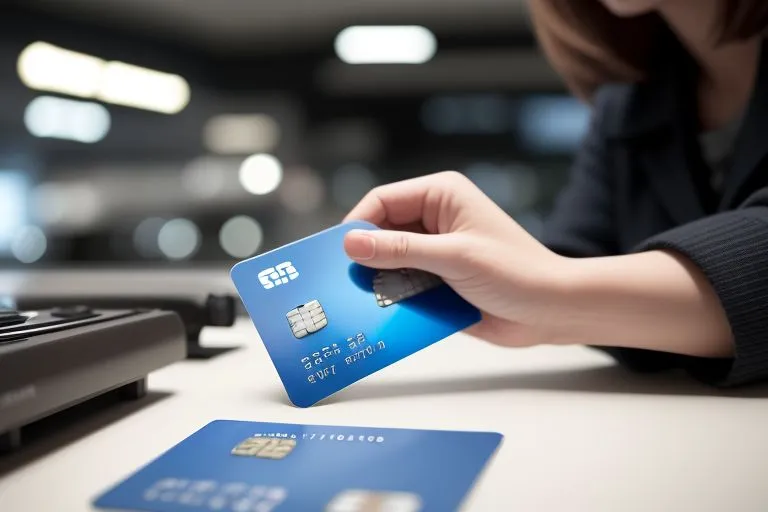When you use a credit card, you might have seen the term APR on your statement or card agreement. But what does APR mean, and why is it important? If you want to understand how credit cards work, APR is one of the most crucial factors to know.

In this article, we’ll explain what APR is, how it works, the different types of APR, and how to manage it effectively so you can avoid high-interest charges. By the end, you’ll have a clear understanding of APR and how it impacts your credit card balance
Understanding APR on a Credit Card
What is APR?
APR stands for Annual Percentage Rate, which is the interest rate charged on your outstanding balance if you don’t pay your credit card bill in full each month. Essentially, it represents the cost of borrowing money from your credit card issuer.
While APR is expressed as an annual rate, interest is usually calculated daily and added to your balance. This means that if you carry a balance from month to month, you’ll end up paying more due to interest charges.
How Does APR Work?
If you pay your credit card balance in full before the due date, you won’t be charged any interest. However, if you only make the minimum payment or carry a balance, your card issuer will apply interest based on your card’s APR.
How APR Affects Your Balance
Let’s say your credit card has an 18% APR, and you have a $1,000 balance that you don’t pay off in full. Here’s what happens:
- Daily interest rate = 18% / 365 = 0.0493% per day
- Interest per day = $1,000 x 0.000493 = $0.49
- After 30 days, the interest would be $14.79, making your new balance $1,014.79.
This shows that even a small APR can add up over time if you carry a balance.

Types of APR on Credit Cards
Credit cards have different types of APRs depending on how you use them. Here are the most common ones:
1. Purchase APR
This is the standard APR applied to your purchases if you carry a balance beyond the due date.
2. Introductory APR (0% APR)
Many credit cards offer a 0% APR introductory period, typically lasting 6-24 months. During this time, you don’t pay interest on purchases or balance transfers. However, after this period ends, the regular APR applies.
3. Balance Transfer APR
This APR applies when you transfer debt from one card to another. Some cards offer 0% APR balance transfer promotions for a limited time, helping you pay off debt without extra interest.
4. Cash Advance APR
If you withdraw cash using your credit card, a higher APR (20%-30%) may apply, and there is usually no grace period.
5. Penalty APR
If you miss a payment or make a late payment, your issuer may apply a penalty APR, which can be as high as 29.99%.
6. Variable vs. Fixed APR
- Variable APR: Changes based on market interest rates (Prime Rate).
- Fixed APR: Remains the same unless your issuer notifies you of a change.
Ways to Reduce APR and Avoid Interest
1. Pay Your Balance in Full
The best way to avoid interest charges is to pay your credit card balance in full every month.
2. Look for Low-Interest Cards
If your card has a high APR, consider switching to one with a lower APR or a 0% introductory APR offer.
3. Improve Your Credit Score
Your credit score affects your APR. A better score can help you qualify for a lower APR. To improve your credit score:
- Pay bills on time.
- Keep credit utilization low.
- Avoid frequent new credit accounts.
4. Negotiate with Your Card Issuer
If you have a good payment history, call your issuer and ask for a lower APR.
5. Use Balance Transfers Wisely
If you have high-interest debt, transferring it to a 0% APR balance transfer card can help you pay it off faster.
APR vs. Interest Rate: What’s the Difference?
| Feature | Interest Rate | APR (Annual Percentage Rate) |
|---|---|---|
| Definition | Cost of borrowing money | Interest rate + fees |
| Includes Fees? | No | Yes |
| Used for Loans? | Yes | Yes |
| Used for Credit Cards? | No | Yes |
Frequently Asked Questions (FAQs) About APR on Credit Cards
1. What is a good APR for a credit card?
APR depends on your credit score:
- Excellent credit (750+): 14% or lower
- Good credit (670-749): 15%-20%
- Average credit (580-669): 20%-25%
- Poor credit (<580): 25%+
2. Does 0% APR mean no interest forever?
No, 0% APR is usually for a 6-24 month promotional period. After that, the regular APR applies.
3. Can APR change over time?
Yes, if your card has a variable APR, it can change based on market interest rates.
Final Thoughts
Understanding APR can help you manage your credit card more effectively. Carrying a balance with a high APR can be costly, but if you pay off your balance every month, you can avoid interest charges altogether.
By managing APR wisely, you can save money, build good credit, and stay in control of your finances.